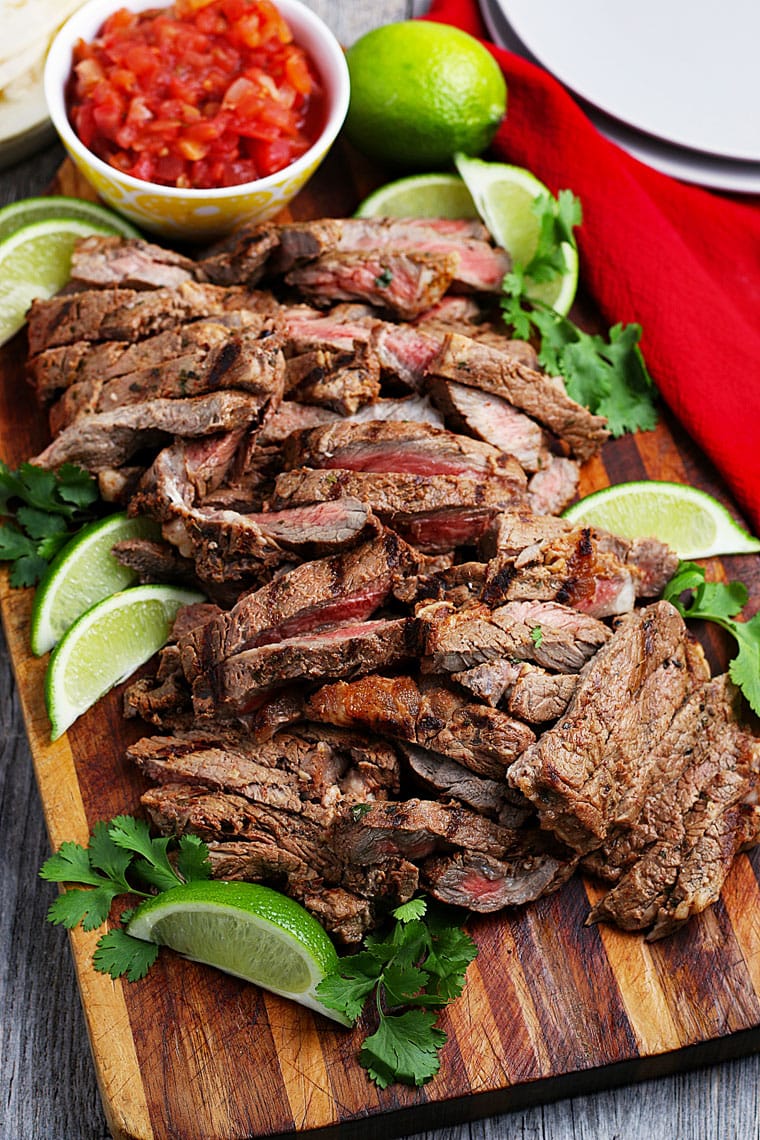Let’s talk about something that’s been making waves in the culinary world—Asada Meat! Whether you're a meat enthusiast or just someone who loves to explore new flavors, asada meat is a dish that deserves your attention. This savory delight has been turning heads for its bold taste and versatility. So, what exactly makes asada meat so special? Let’s dive right into it and uncover the secrets behind this mouthwatering experience.
Asada meat isn’t just another cut of beef; it’s a celebration of culture, tradition, and flavor. Originating from Latin America, this dish has become a staple at barbecues and family gatherings. People from all walks of life are now discovering why asada meat is such a big deal. It’s not just about the meat itself—it’s about the experience, the aroma, and the way it brings people together.
In this article, we’ll explore everything you need to know about asada meat. From its origins to cooking techniques, nutritional value, and even some fun facts, we’ve got you covered. Whether you’re looking to impress your friends with your grilling skills or simply want to enjoy a delicious meal, asada meat is here to satisfy your cravings. So, let’s get started!
Read also:Don Rickles The King Of Insult Comedy And His Unforgettable Legacy
Here’s a quick overview of what we’ll cover:
- The Origin of Asada Meat
- Different Cuts of Asada Meat
- Cooking Methods for Asada Meat
- Seasoning Secrets for Asada Meat
- Nutritional Value of Asada Meat
- Best Pairings with Asada Meat
- Delicious Asada Meat Recipes
- Health Benefits of Asada Meat
- Frequently Asked Questions About Asada Meat
- Final Thoughts on Asada Meat
The Origin of Asada Meat
Asada meat has deep roots in Latin American culture. The term "asada" comes from the Spanish word "asar," which means "to roast" or "to grill." This dish has been around for centuries and is often associated with celebrations, holidays, and special occasions. It’s more than just food; it’s a symbol of unity and tradition.
Back in the day, asada meat was cooked over open fires using simple tools. The method was straightforward—season the meat with salt, pepper, and maybe a little garlic, then grill it until it reached perfection. Over time, people started experimenting with different spices, marinades, and techniques, which gave rise to the diverse flavors we enjoy today.
Where Did Asada Meat Begin?
While asada meat is enjoyed across Latin America, it’s most commonly associated with countries like Argentina, Uruguay, and Mexico. In Argentina, asada is considered a national dish and is often served during festivals and family gatherings. The Argentinians take their asado (grilling) very seriously, and it’s an integral part of their culinary identity.
In Mexico, asada meat is often part of a larger barbecue setup, where different cuts of meat are grilled alongside vegetables and other sides. It’s all about creating a balanced meal that’s both satisfying and flavorful. No matter where you go, one thing is for sure—asada meat is loved by many!
Different Cuts of Asada Meat
Not all asada meat is created equal. There are several cuts that are commonly used for grilling, each with its own unique texture and flavor profile. Choosing the right cut can make a big difference in the final taste of your dish. Here are some of the most popular cuts:
Read also:Elizabeth Carlisle Uk Kidnapping Movie A Gripping Tale Unveiled
- Flank Steak: This is one of the most popular cuts for asada meat. It’s lean, tender, and full of flavor. Perfect for marinating and grilling.
- Skirt Steak: Another favorite, skirt steak is known for its robust flavor and chewy texture. It’s often used in fajitas and other Mexican dishes.
- Ribeye: If you’re looking for something more indulgent, ribeye is a great option. It’s rich, juicy, and packed with flavor.
- Brisket: For those who love slow-cooked meats, brisket is a must-try. It’s tender, smoky, and absolutely delicious.
Why Does the Cut Matter?
The cut of meat you choose will affect the taste, texture, and cooking time of your asada. For example, flank steak cooks quickly and is best served medium-rare, while brisket requires a longer cooking time to achieve that melt-in-your-mouth texture. Understanding the differences between cuts will help you make better choices when shopping for ingredients.
Cooking Methods for Asada Meat
There’s no one-size-fits-all approach to cooking asada meat. Depending on the cut you choose, you may need to adjust your cooking method to ensure the best results. Here are some of the most popular methods:
- Grilling: The classic method for cooking asada meat. Grilling brings out the natural flavors of the meat and gives it that smoky aroma we all love.
- Pan-Seared: If you don’t have access to a grill, pan-searing is a great alternative. It’s quick, easy, and still delivers that delicious charred flavor.
- Oven-Baked: For larger cuts like brisket, baking in the oven is a great option. It allows the meat to cook evenly and become tender over time.
Tips for Perfect Grilling
Grilling asada meat might seem intimidating at first, but with a few tips, you’ll be a pro in no time. Here’s what you need to know:
- Preheat your grill to high heat before adding the meat.
- Use tongs instead of a fork to avoid piercing the meat and losing juices.
- Let the meat rest for a few minutes after cooking to allow the juices to redistribute.
Seasoning Secrets for Asada Meat
Seasoning is what takes asada meat from good to great. While some people prefer a simple salt and pepper rub, others like to get creative with marinades and spice blends. Here are some seasoning ideas to inspire your next cooking session:
- Classic Salt and Pepper: Sometimes, the simplest approach is the best. A generous sprinkle of salt and pepper can enhance the natural flavors of the meat.
- Garlic and Herb Marinade: Combine minced garlic, fresh herbs like rosemary and thyme, olive oil, and a splash of lime juice for a flavorful marinade.
- Chili and Spice Blend: For those who like a little heat, a blend of chili powder, cumin, paprika, and garlic powder can add a spicy kick to your asada.
How Long Should You Marinate?
The length of time you marinate your asada meat depends on the cut and the marinade itself. For lean cuts like flank steak, a few hours in the marinade is usually sufficient. For tougher cuts like brisket, you may want to marinate overnight to allow the flavors to penetrate deeply.
Nutritional Value of Asada Meat
Asada meat is not only delicious but also packed with nutrients. Depending on the cut, you can enjoy a good dose of protein, vitamins, and minerals with every bite. Here’s a breakdown of the nutritional benefits:
- Protein: Asada meat is an excellent source of high-quality protein, which is essential for muscle growth and repair.
- Iron: Red meat like asada is rich in iron, which helps transport oxygen throughout the body.
- Vitamins: Beef contains vitamins like B12 and B6, which are important for energy production and brain function.
Is Asada Meat Healthy?
As with any food, moderation is key. While asada meat can be part of a healthy diet, it’s important to balance it with plenty of vegetables and whole grains. Opt for lean cuts and avoid overloading on heavy sauces to keep your meal nutritious and delicious.
Best Pairings with Asada Meat
No meal is complete without the perfect side dishes. When it comes to asada meat, there are plenty of options to choose from. Here are some of the best pairings:
- Grilled Vegetables: Think bell peppers, zucchini, and onions. They add color, texture, and flavor to your plate.
- Corn on the Cob: A classic barbecue side that’s sweet, savory, and satisfying.
- Salads: A fresh salad with a light dressing can balance out the richness of the meat.
Don’t Forget the Drinks!
What’s a barbecue without a refreshing drink? Whether you prefer a cold beer, a fruity cocktail, or a glass of red wine, there’s something for everyone. Just make sure to stay hydrated, especially if you’re cooking in the heat!
Delicious Asada Meat Recipes
Ready to try your hand at cooking asada meat? Here are a couple of recipes to get you started:
Recipe 1: Grilled Flank Steak with Chimichurri Sauce
Ingredients:
- 1 lb flank steak
- 2 tbsp olive oil
- 2 cloves garlic, minced
- Salt and pepper to taste
- For the chimichurri sauce: fresh parsley, cilantro, red wine vinegar, olive oil, garlic, and red pepper flakes.
Instructions:
- Marinate the flank steak in olive oil, garlic, salt, and pepper for at least 2 hours.
- Preheat your grill to high heat.
- Cook the steak for 4-5 minutes on each side for medium-rare.
- Let it rest for a few minutes before slicing.
- Meanwhile, prepare the chimichurri sauce by blending all ingredients in a food processor.
- Serve the steak with chimichurri sauce on the side.
Recipe 2: Slow-Cooked Brisket with BBQ Sauce
Ingredients:
- 2 lb beef brisket
- Your favorite BBQ sauce
- Smoked paprika, garlic powder, onion powder, and cayenne pepper for seasoning.
Instructions:
- Season the brisket generously with smoked paprika, garlic powder, onion powder, and cayenne pepper.
- Place the brisket in a slow cooker and pour BBQ sauce over the top.
- Cook on low for 8-10 hours or until the meat is tender and falls apart.
- Shred the meat and serve with extra BBQ sauce on the side.
Health Benefits of Asada Meat
Asada meat isn’t just tasty—it’s also good for you! Here are some of the health benefits you can enjoy:
- Rich in Protein: Protein is essential for building and repairing tissues in the body.
- High in Iron: Iron helps prevent anemia and supports energy production.
- Good Source of Vitamins: Beef contains important vitamins like B12 and B6, which support brain function and metabolism.
How to Make Asada Meat Healthier
If you’re looking to make your asada meat a bit healthier, here are some tips:
- Choose lean cuts of meat to reduce fat content.
- Use herbs and spices instead of heavy sauces to add flavor without extra calories.
- Pair your asada with plenty of fresh vegetables to balance out the meal.
Frequently Asked Questions About Asada Meat


